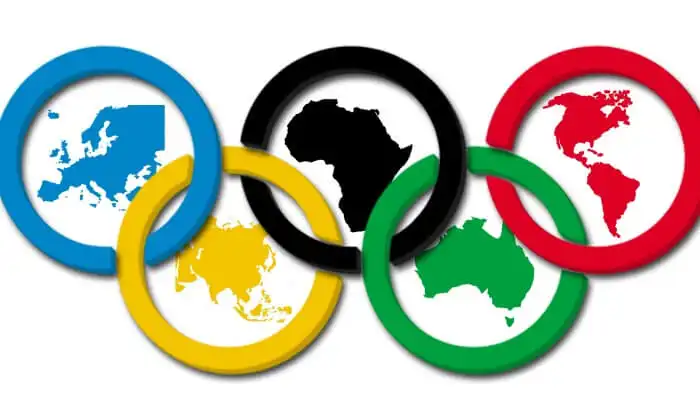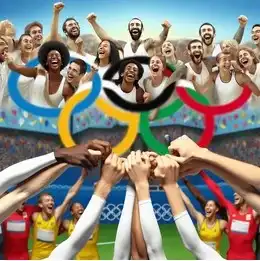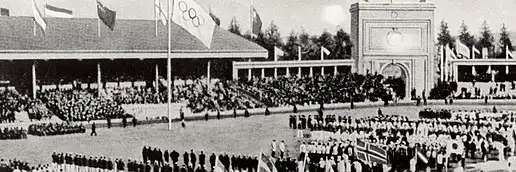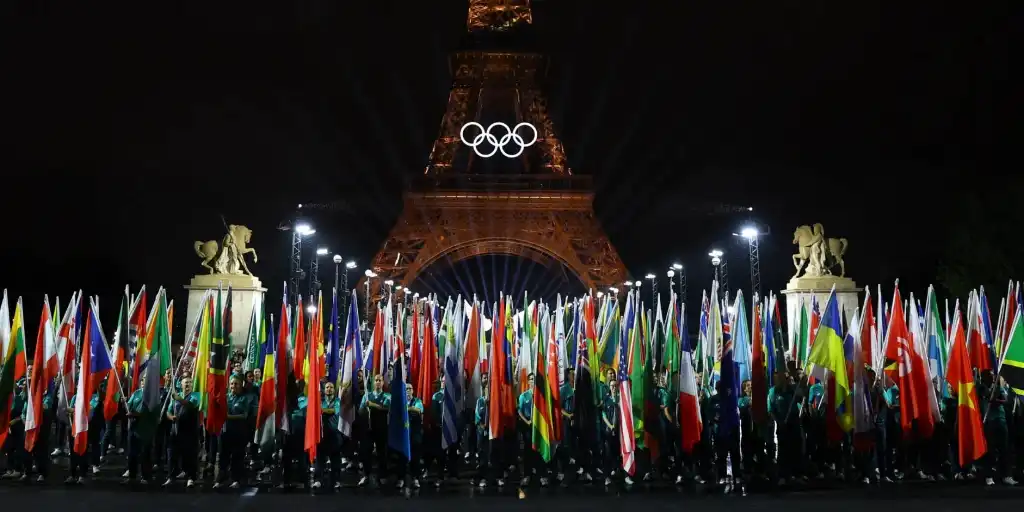Hello, young athletes and sports fans! Today, we’re going to explore the fascinating story behind one of the world’s most recognizable symbols: the Olympic Rings! You might have seen them on flags, T-shirts, or during the Olympic Games, but do you know what they represent and where they came from? Let’s dive into the colourful history of the Olympic Rings!

A Symbol of Unity
The Olympic Rings consist of five interlocking rings coloured blue, yellow, black, green, and red on a white background. But what do these colours mean? The rings represent the five continents of the world: Africa, the Americas, Asia, Europe, and Oceania. The founder of the modern Olympic Games, Pierre de Coubertin, created this symbol in 1913 to show unity among nations.

Did You Know?
The colours of the rings were chosen because every nation in the world had at least one of these colours in its national flag. This made the Olympic Rings a truly global symbol, representing athletes from all walks of life coming together in friendly competition.

The Creation of the Rings
Now, let’s talk about Pierre de Coubertin, the man behind the modern Olympics. Born in France in 1863, Coubertin was passionate about sports and education. He believed that sports could bring people together and help promote peace. After visiting the ancient Olympic ruins in Greece, he was inspired to revive the Olympic Games.

In 1913, while planning the first modern Olympics in 1896, Coubertin designed the Olympic Rings. The symbol was officially introduced during the 1920 Olympic Games in Antwerp, Belgium. From then on, the Olympic Rings became a central part of the Olympic movement.

The Colours of the Rings
You might be wondering why Coubertin chose these specific colours. As mentioned earlier, every country had at least one of the colours in its national flag. Here’s a little breakdown of the colours and what they represent:
- Blue: Represents Europe.
- Yellow: Represents Asia.
- Black: Represents Africa.
- Green: Represents Oceania.
- Red: Represents the Americas.
These colours were chosen not only for representing continents but also for their visibility. They are bright and easy to spot, which makes the Olympic Rings stand out during the Games.
The Rings in Action
The Olympic Rings have been used in various ways throughout the history of the Olympic Games. They appear on flags, medals, and merchandise related to the Olympics. Athletes wear uniforms with the rings, and you might even see them in advertisements and promotions.

The Rings also serve as a reminder of the Olympic motto: “Citius, Altius, Fortius,” which means “Faster, Higher, Stronger.” This motto encourages athletes to push their limits and strive for excellence.
The Olympic Games Today
Today, the Olympic Games are held every four years, with the Summer and Winter Games alternating every two years. Athletes from all over the world come together to compete in various sports, all under the banner of the Olympic Rings.

The spirit of the Olympics goes beyond sports; it’s about bringing people together, celebrating diversity, and promoting peace. The Olympic Games inspire young athletes everywhere to dream big and work hard to achieve their goals.

Fun Facts about the Olympic Rings
- The First Use: The Olympic Rings were first used at the 1920 Antwerp Games, but they have since become a permanent symbol of the Olympics.
- Design Variations: Over the years, the design of the Olympic Rings has been adapted for different events and occasions, but the core symbol remains the same.
- The Olympic Flag: The Olympic flag, which features the Rings, was raised for the first time at the 1920 Games and has since been displayed at every Olympic Games.
- Cultural Significance: The Rings are recognised worldwide and often represent not just the Olympic Games but also the ideals of sport and fair play.
The Importance of the Rings
The Olympic Rings represent more than just a sporting event; they symbolise hope and unity for people worldwide. They remind us that, despite our differences, we can come together to celebrate the joy of competition and the spirit of sportsmanship.

Athletes from diverse backgrounds, cultures, and countries compete side by side, all under the Olympic flag and the emblem of the Rings. The spirit of the Olympics teaches us about respect, friendship, and excellence, making the world a better place through the power of sport.
Conclusion
So, there you have it! The story behind the Olympic Rings is unity, passion, and celebrating sport. From their creation by Pierre de Coubertin to their recognition as a global symbol, the Rings remind us of the importance of coming together as one world, one community, and one family.
For more interesting articles, please visit www.kidzherald.com





